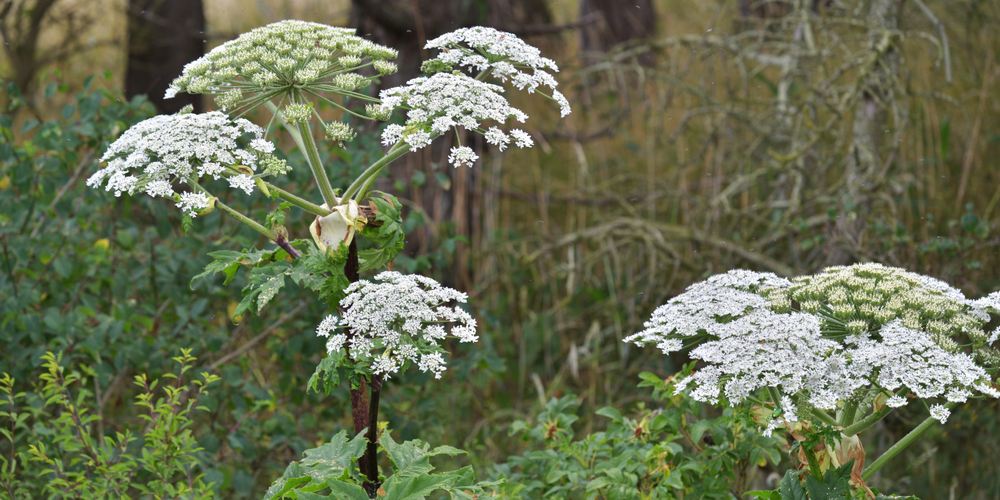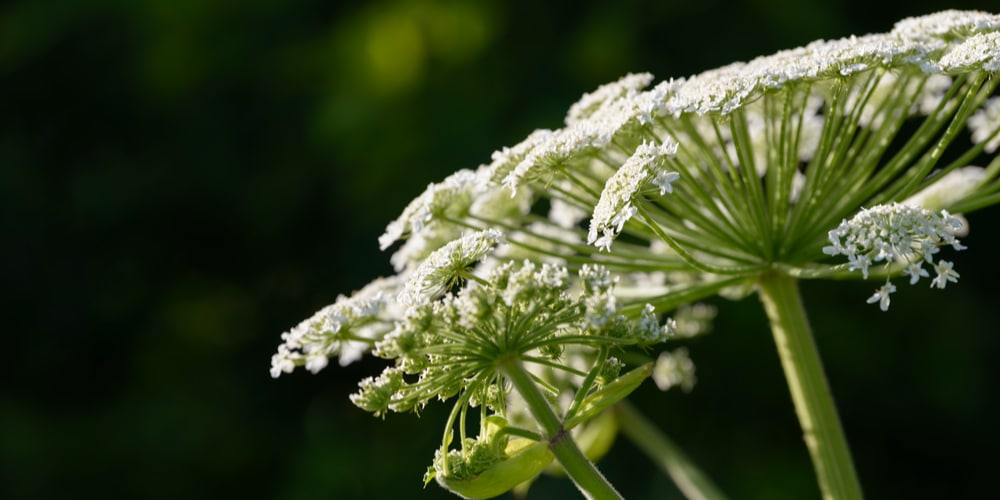Giant hogweed was brought to the United States in the early 1900s and used in a New York garden. From New York, it has spread to surrounding states, including Ohio. Typically, it is found in Northeast Ohio in areas with damp soil.
What Is Giant Hogweed?
Giant hogweed is an invasive species that is also hazardous to human health. In many places, like Ohio, it is illegal to grow, sell, or transport it. It comes from the carrot family and can grow 14 feet or more with leaves as large as five feet wide. There are many other plants such as Queen Anne’s Lace and Hemlock that look very similar to hogweed.
Why Is Giant Hogweed a Problem?
Giant hogweed is such an issue because it leads to our native plants not having enough space to grow. Its flowers disperse so many seeds that it is hard to control, especially once they take root.
The sap of giant hogweed can cause burns when it gets on our skin and is exposed to the sun. If you come into contact with giant hogweed, you should wash that area thoroughly and keep it covered for at least 48 hours.
How To Identify Giant Hogweed in Ohio
You can identify giant hogweed in a few different ways. If you see a very tall plant with huge leaves and suspect it could be giant hogweed, take a closer look, but don’t touch it at risk of coming into contact with its sap.
Giant hogweed also has a green stem with purple splotches and white hairs. Beware, though, because other plants look like giant hogweed. You should still be cautious because similar-looking plants are often dangerous, too.
How To Control and Get Rid of Giant Hogweed in Ohio
Giant hogweed plants disperse thousands of seeds which is why they are hard to control. There are measures to take to control and get rid of giant hogweed. These include removing it and killing it.
Remove the Head
Remove the head of the plant before the seeds have a chance to disperse.
If the sap gets on the outside of a bag, put that bag in another bag. This extra layer ensures everyone’s safety. After bagging the flowers, you can use the sun’s heat to kill or render the seeds useless.
Remove the Soil
You can remove the plant when you find giant hogweed, but that may not solve the problem. If there are seeds in the soil, they will start growing again. When removing this invasive plant, also remove any soil with hogweed seeds.
Its seeds are a small, flat disc with brownish-red markings on them.
Once you remove contaminated soil, place it in a bag. You can also bury it at least 20 inches underground and cover it back up.
Herbicides or Root Cutting
Some herbicides can take out giant hogweed, too. Using systemic herbicides will prevent the plant from regrowing.
You can also cut the roots. This step is an effective control measure on a small scale that will prevent hogweed from growing. It requires some monitoring to ensure the roots do not continue to grow. You can combine herbicides and root cutting to kill the roots.
Nip It in the Bud
It is vital to control giant hogweed and to report it when you see it. Since it is hazardous to both people and our native plants and spreads quickly, not reporting it can lead to many issues.

